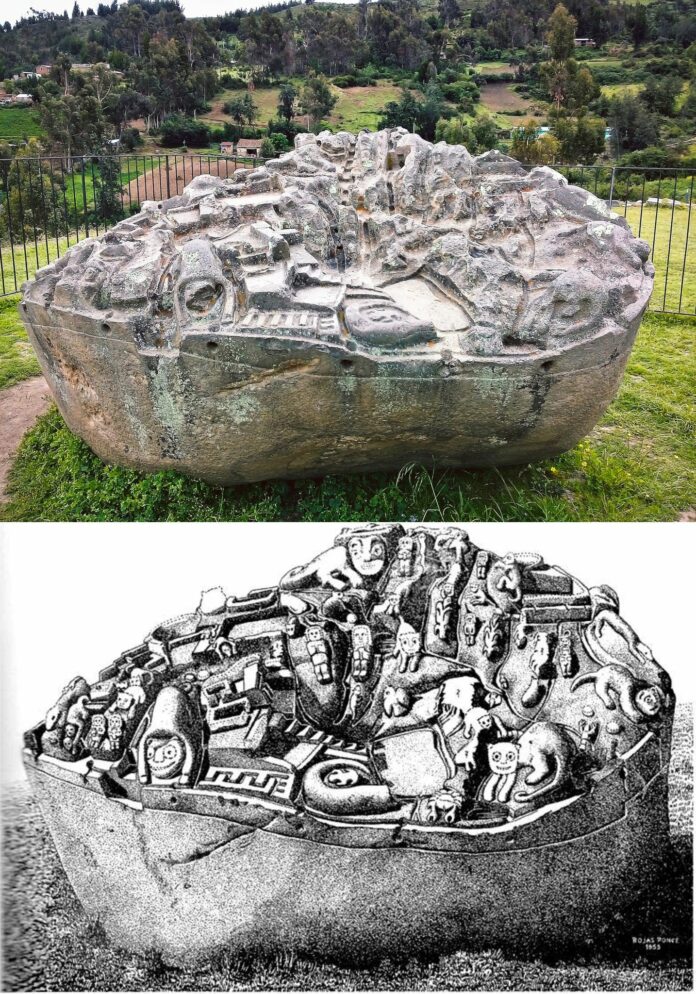Nestled amidst the verdant hills and streams of Apurimac, Peru, lies Sayhuite, an archaeological site that continues to baffle and intrigue historians and archaeologists alike. The centerpiece of this site is the Sayhuite Stone, a colossal granite monolith adorned with over 200 mysterious symbols. This enigmatic stone, along with the surrounding ruins, offers a glimpse into the sophisticated engineering and cosmological understanding of the Inca civilization.
The Sayhuite Stone: A Mysterious Relic
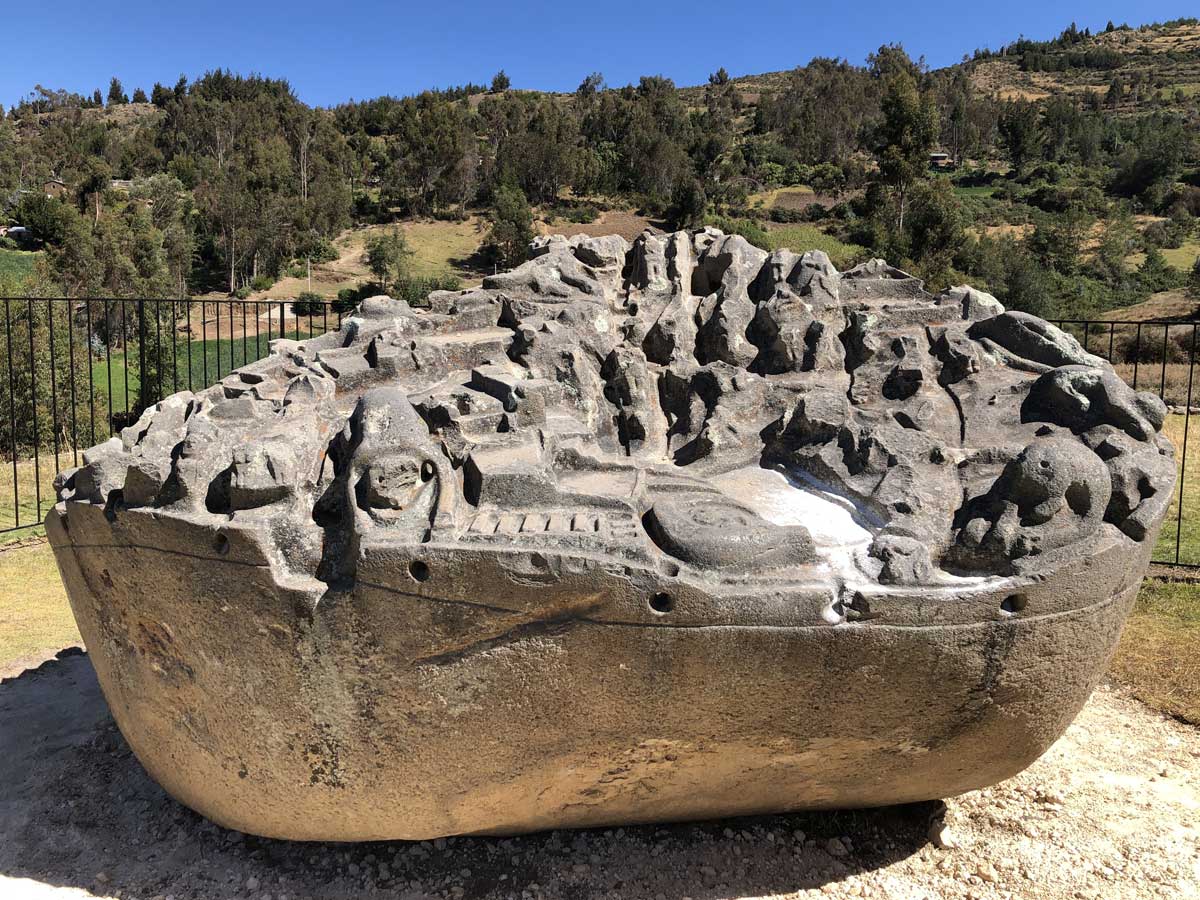
Location and Description
The Sayhuite site is strategically located on the ancient route between Cusco and Abancay. This idyllic location, surrounded by lush greenery and flanked by two streams, is home to the Sayhuite Stone. The stone itself is about four meters in diameter and two and a half meters high. Its upper surface is intricately carved with an array of symbols, including geometric and zoomorphic reliefs such as reptiles, frogs, and felines.
Theories and Interpretations
The true purpose of the Sayhuite Stone remains a subject of debate. Some scholars suggest that the stone represents the cosmos and the living world, while others propose it as a construction model, complete with aqueducts and irrigation systems. One prominent theory, put forward by Arlan Andrews, posits that the stone served as a hydraulic topographic model. This theory is supported by the presence of terraces, ponds, rivers, tunnels, and irrigation canals carved into the stone.
Historical Context
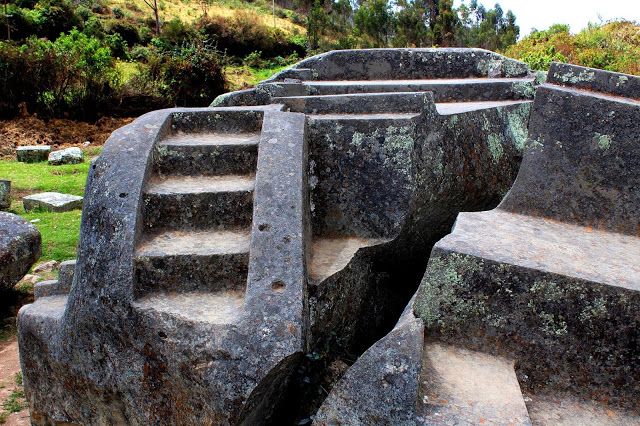
According to John Hemming in his book Monuments of the Incas, the Sayhuite temple was once presided over by the priestess Asarpay. Legend has it that Asarpay, upon the arrival of the Spanish, threw herself from a nearby waterfall rather than be captured. The temple itself, now devoid of its once-precious gold, is scattered with large carved andesite stones, hinting at a grander past.
The Archaeological Complex of Sayhuite
Sector I: Monoliths and Enclosures
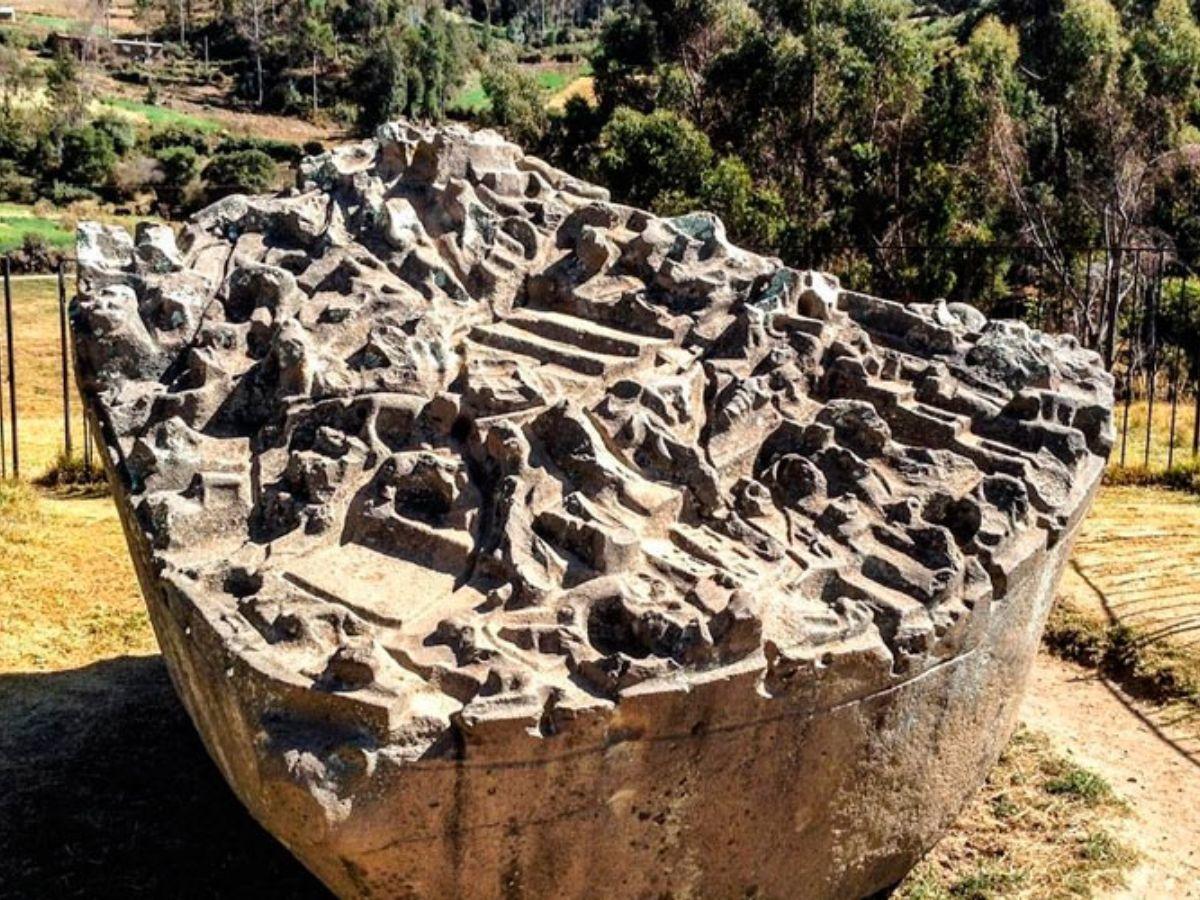
The primary sector of the Sayhuite archaeological complex is situated at a high vantage point, offering a panoramic view of the entire site. Here lies the main monolith, an ovoid granite structure standing 2.5 meters tall, adorned with a diverse iconography. Surrounding this monolith are several enclosures, the largest of which measures 0.5 by 0.7 meters and is pyramid-shaped, likely serving as dwellings for priests.
Sector II: Areas of Stairs and Fountains
This sector features a series of nine fountains aligned from east to west, accompanied by a staircase with sixty-eight steps. The fine masonry of this area, bordered by walls made from 0.6 by 0.4-meter tiles, suggests it was used for water rituals, emphasizing the importance of water in Inca culture.
Sector III: Rumi Huasi Area
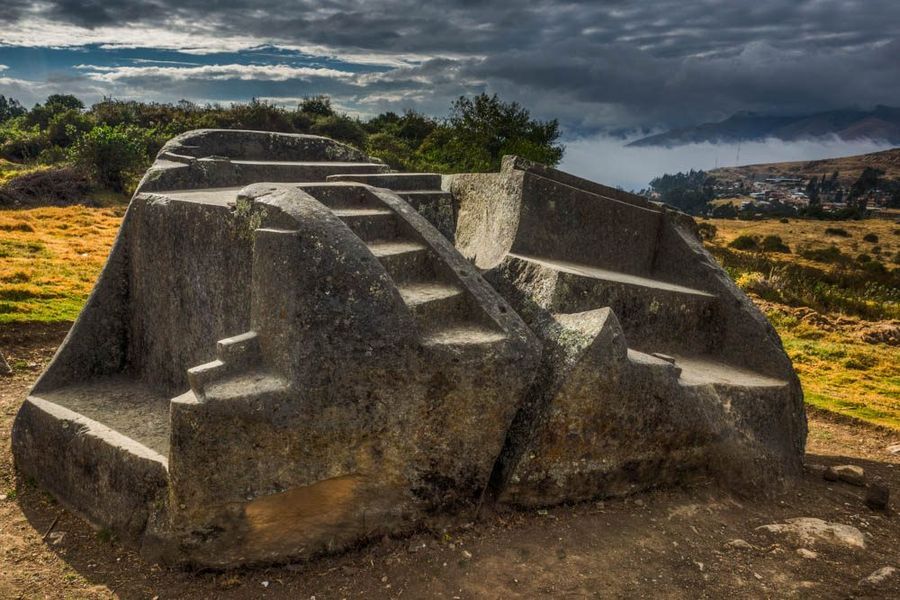
Located to the east, the Rumi Huasi area spans approximately 1200 square meters. This sector is home to Monolith II, a rectangular structure with geometric carvings such as platforms, stairs, and circles.
Sector IV: Pyramidal Trunk Definition Area
In the southeast sector of the complex lies the USNU PAMPA, a solid structure measuring 18 by 34 meters. This area was likely used for religious ceremonies dedicated to the sun and water, serving as a place for mass gatherings and worship.
Sector V: Intihuatana Area
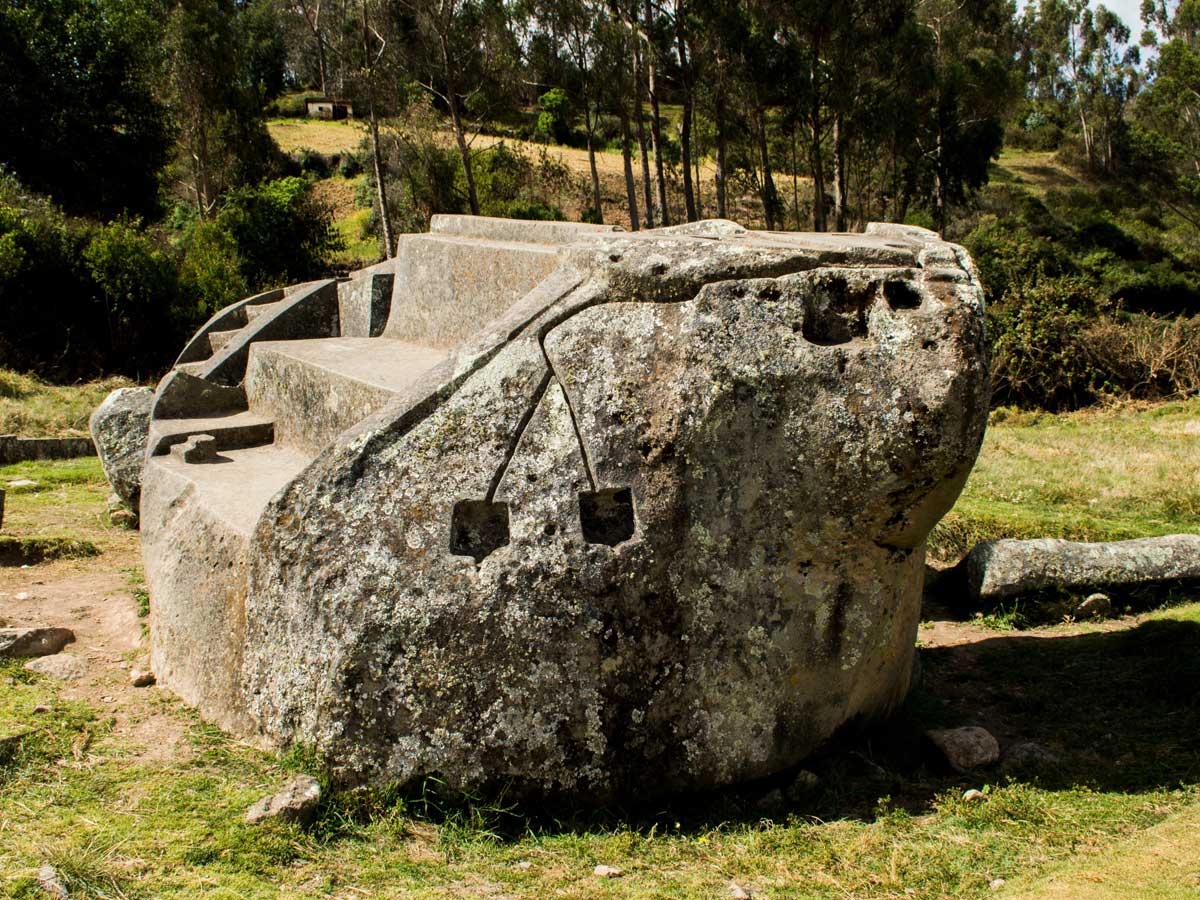
Characterized by the presence of the Intihuatana monolith, this sector served as an Inca observatory. The rectangular monolith measures 3.40 meters in length and 0.94 meters in both width and height. Associated with this area are platform fountains and rooms used for timekeeping.
The Sayhuite Stone: A Closer Look

Dimensions and Carvings
The Sayhuite Stone, with a circumference of eleven meters and nearly two and a half meters in height, is a marvel of ancient engineering. Its surface is adorned with over 200 phytomorphic and zoomorphic figures, representing flora, fauna, topography, and human constructions. These carvings are arranged in apparent disorder, taking advantage of the stone’s natural reliefs and depressions.
Interpretations and Representations
Many scholars believe that the Sayhuite Stone represents the Tahuantinsuyo, the Inca Empire. The carvings are thought to depict the empire’s regions: the highlands (represented by llamas, condors, and pumas), the jungle (represented by monkeys, iguanas, and jaguars), and the coast (represented by pelicans, crabs, and octopuses). This intricate relief serves as a testament to the Incas’ sophisticated understanding of their environment and their reverence for water.
Function and Purpose
The exact function of the Sayhuite Stone remains elusive. Some theories suggest it was a scale model for testing and studying water properties, while others propose it was used to instruct engineers and technicians. The stone’s carvings have been altered multiple times, indicating its use evolved over time.
Conclusion
The Sayhuite Stone and its surrounding archaeological complex offer a fascinating glimpse into the ingenuity and cosmological beliefs of the Inca civilization. While much about the site remains shrouded in mystery, the stone’s intricate carvings and sophisticated design underscore the Incas’ advanced understanding of engineering and their reverence for the natural world. As researchers continue to study this enigmatic site, the Sayhuite Stone stands as a testament to the enduring legacy of the Inca Empire.
